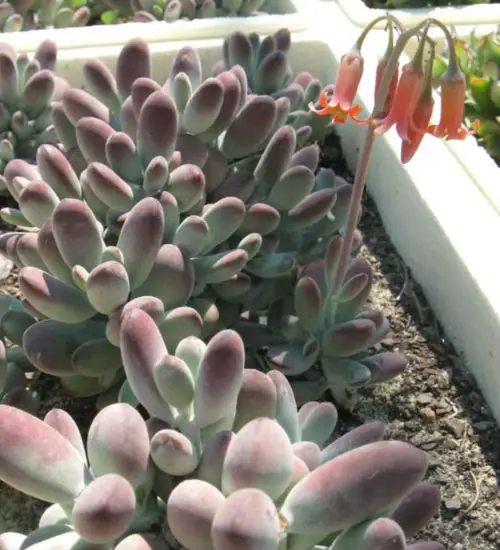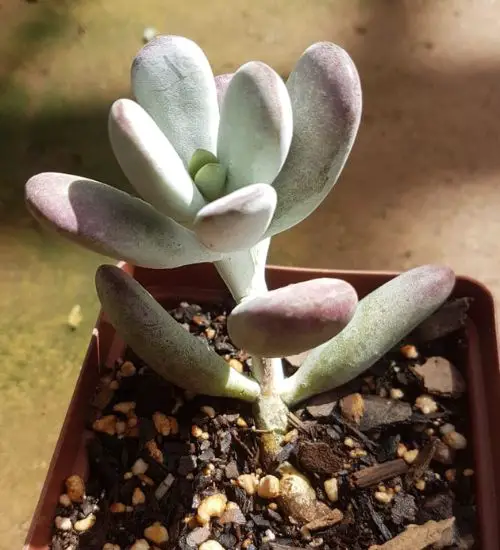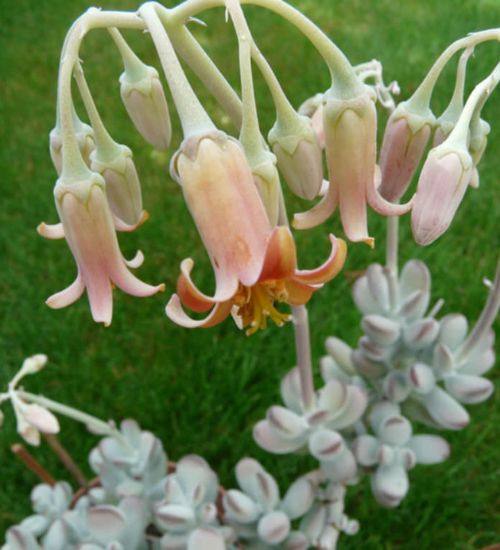Sun: Full sun to partial sun
Water: Typical water needs for a succulent
Temperature: Zone 1a from -60° F to -55° F (-51.1 ° C to -48,3° C) to Zone 11b from 45° F to 50° F (7.2° C to 10° C)
Winter Survival: Not cold hardy
Propagation: cuttings
Flower: in the summer
Flower Type: white
Toxic: Can be toxic to humans and animals
Dormant: summer
Space Requirement: Indoors & Outdoors
Common Problems: Plants may rot if overwatered, Powdery mildew, pests
Where to buy Cotyledon orbiculata oophylla?
Basc Care for Cotyledon orbiculata oophylla
Watering
Regular watering period should be every 2 weeks
What you need to remember is that this type of succulents needs to be watered for every 2 weeks
Fertilizing
Only feed this succulent during its active growing seasons which means winter. Use the right fertilizer applied in the right amounts. Applying half-strength balanced fertilizer every month or so is recommended for optimal results.
Do not fertilize during summer as the plant is dormant.
Sun & Location Requirements for "Lady Fingers"
Cotyledon orbiculata oophylla grows best in full sun to partial sun, so make sure the plant is getting at least 6 hours of direct sunlight each day. Depending on where you live and what time of year it is, this could mean moving your succulent outdoors during the summer months or keeping it near a south-facing window all year round.
As per this succulent profile, it is only able to stay healthy when the environment temperature is above the range of zone 1a from -60° F to -55° F (-51.1 ° C to -48,3° C).
Cotyledon orbiculata oophylla is not cold hardy and does not survive in freezing conditions. However, there are certain strategies that can be used to help the plant thrive despite the chill of winter. Proper drainage and insulation are essential for succulent X during periods of extreme cold. Placing a layer of mulch or gravel on the soil around the plant can also help keep it warm.
Any succulents in the group will need a medium space to grow. You can place your pot at your table or window. Since this plant needs more space than mini succulents, you should consider do not plant them together with other succulents/plants.
Propagation
One way to propagate Cotyledon orbiculata oophylla is by cutting
Toxicity

The toxicity of Cotyledon can vary depending on the individual species, but all species are potentially dangerous if ingested. Symptoms of poisoning may include vomiting, abdominal pain, diarrhea and dizziness. If you believe someone has ingested parts of Cotyledon orbiculata oophylla, seek medical help immediately.
Pests and Diseases
Cotyledon orbiculata oophylla can be affected common pests and diseases like most of the other succulents such as snails, aphids, and mealybugs.
If you do spot any of pest signs, you can treat your succulent using below methods.
- Snails: clean infected plants, soapy water.
- Aphids: quarantine, clean infected plants, soapy water.
- Mealybugs: quarantine, clean infected plants, soapy water.
Besides that, to prevent serious health issues from happening, keep your succulent in a well-ventilated area and check it regularly for any signs of pests or health problems.


